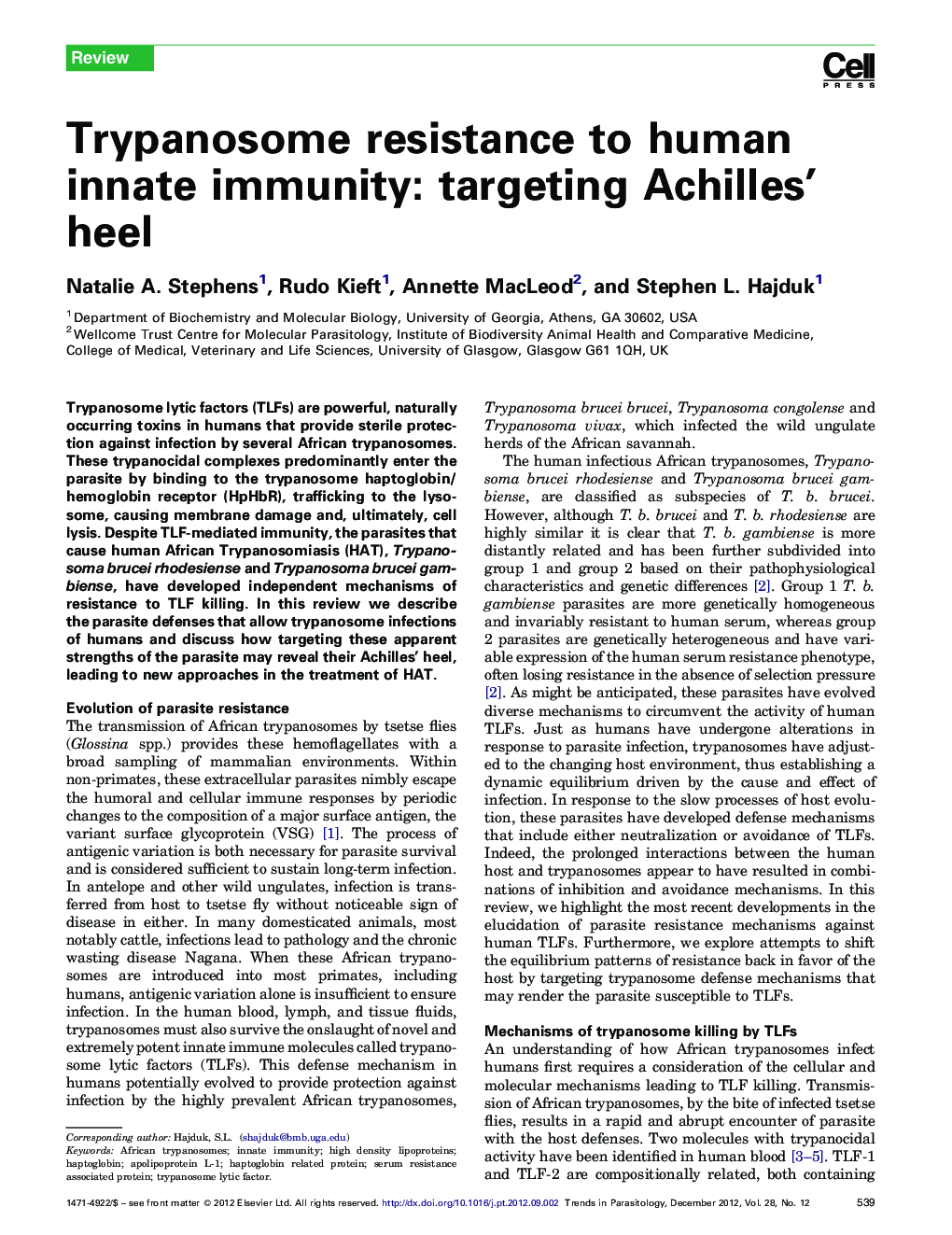| Article ID | Journal | Published Year | Pages | File Type |
|---|---|---|---|---|
| 3423235 | Trends in Parasitology | 2012 | 7 Pages |
Trypanosome lytic factors (TLFs) are powerful, naturally occurring toxins in humans that provide sterile protection against infection by several African trypanosomes. These trypanocidal complexes predominantly enter the parasite by binding to the trypanosome haptoglobin/hemoglobin receptor (HpHbR), trafficking to the lysosome, causing membrane damage and, ultimately, cell lysis. Despite TLF-mediated immunity, the parasites that cause human African Trypanosomiasis (HAT), Trypanosoma brucei rhodesiense and Trypanosoma brucei gambiense, have developed independent mechanisms of resistance to TLF killing. In this review we describe the parasite defenses that allow trypanosome infections of humans and discuss how targeting these apparent strengths of the parasite may reveal their Achilles’ heel, leading to new approaches in the treatment of HAT.
